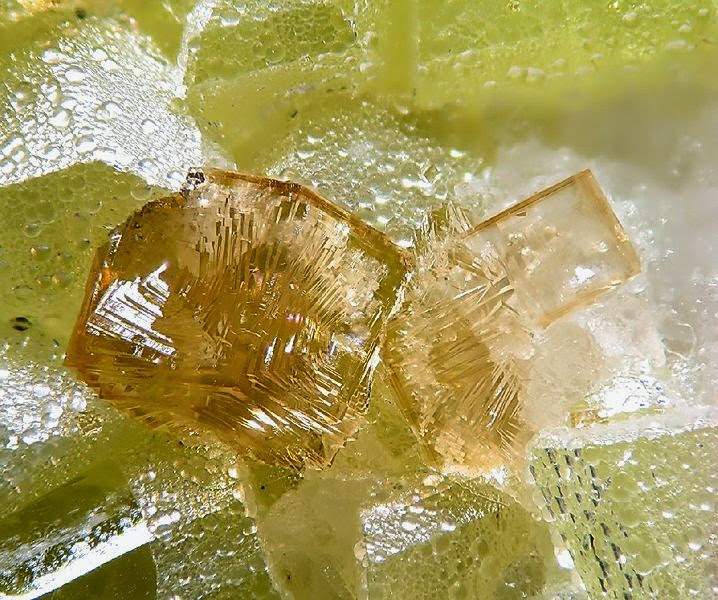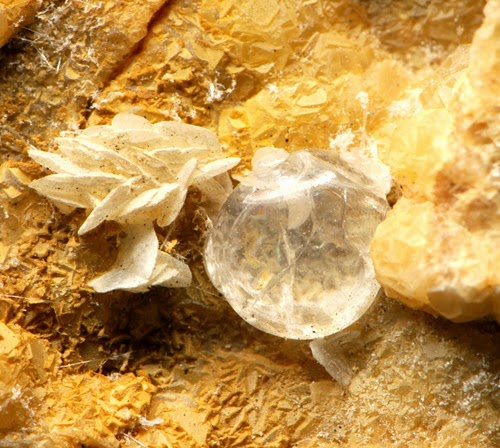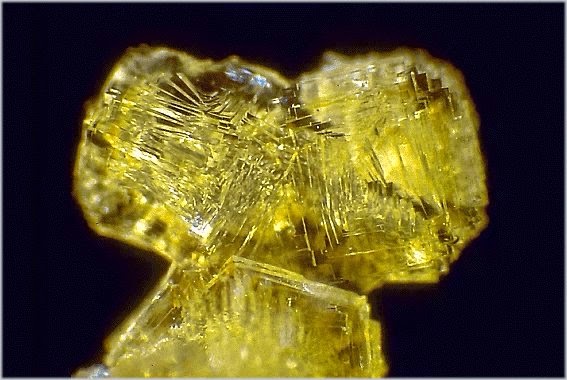
Chemical Formula: 46SiO2·6(N2,CO2)·2(CH4,N2)
Locality: In Italy, at Solfatara Giona, Racalmuto, and at Caltanissetta, Sicily.
Name Origin: From the Greek for “black” and “to be burned” in allusion to the fact that some specimens blacken on heating. Low temperature form.
Melanophlogite (MEP) is a rare silicate mineral and a polymorph of silica (SiO2). It has a zeolite-like porous structure which results in relatively low and not well-defined values of its density and refractive index. Melanophlogite often overgrows crystals of sulfur or calcite and typically contains a few percent of organic and sulfur compounds. Darkening of organics in melanophlogite upon heating is a possible origin of its name, which comes from the Greek for “black” and “to be burned”.
Occurrence
Melanophlogite is a rare mineral which usually forms round drops (see infobox) or complex intertwinned overgrowth structures over sulfur or calcite crystals. Rarely, it occurs as individual cubic crystallites a few millimeters in size. It is found in Parma, Torino, Caltanissetta and Livorno provinces of Italy; also in several mines of California in the US, in Crimea (Ukraine) and Pardubice Region (Czech Republic).
History
Discovery date : 1876
Town of Origin : SOLFATARE GIONA, RACALMUTO, SICILE
Country of Origin : ITALIE
Optical properties
Optical and misc. Properties : Transparent to Translucent
Refractive Index : from 1,42 to 1,45
Physical Properties
Cleavage: None
Color: Brown, Colorless, Light yellow, Dark reddish brown.
Density: 1.99 – 2.11, Average = 2.04
Diaphaneity: Transparent to Translucent
Fracture: Brittle – Generally displayed by glasses and most non-metallic minerals.
Hardness: 6.5-7 – Pyrite-Quartz
Luminescence: Fluorescent, Short UV=weak gray-white, Long UV=gray-white.
Luster: Vitreous (Glassy)
Streak: white
Photos :












